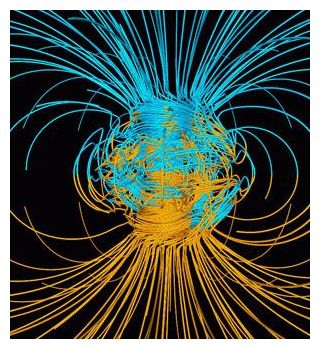The Earth's magnetic poles are aligned along roughly the same axis as its rotational poles. Geologists have assumed this was also true in the past, so they use volcanic rocks, which when they formed took on an imprint of the direction and strength of the Earth's magnetic field, to infer the rocks' original latitude and to trace continental motions over the past billion years.
But doing this for rocks in North America and eastern Europe is turning up a conundrum. In both regions, there appear to be rocks that were at the equator at some points between 550 and 600 million years ago and near the poles for other parts of this time period.
There appear to be rocks that moved from the poles to the equator several times in 50 million years.That would imply that the ancient continents sped across the surface at more than 45 centimetres a year - twice as fast as the top speed of plate tectonics - then returned at a similarly impossible clip. That speed is also too fast to be explained by a phenomenon called true polar wander, in which the Earth's entire crust and mantle reorient, moving a different geographic region to the north pole.
Instead, Alexandra Abrajevitch at Kochi University in Japan and Rob Van der Voo of the University of Michigan in Ann Arbor suggest the magnetic pole itself shifted by 90 degrees, so that it lined up along the equator (Earth & Planetary Science Letters, DOI: 10.1016/j.epsl.2010.02.038).
The planet's magnetic field is generated by the motion of molten iron flowing around a superhot, solid iron core. Changes in the thickness, viscosity and conductivity of the outer core in the past could have led to convection patterns that caused the magnetic pole to tilt.
David Stevenson of the California Institute of Technology in Pasadena says an equatorial pole is possible but says it is not clear what would cause the field to point at a single longitude long enough to leave a magnetic signature in the rocks.




Reader Comments
to our Newsletter